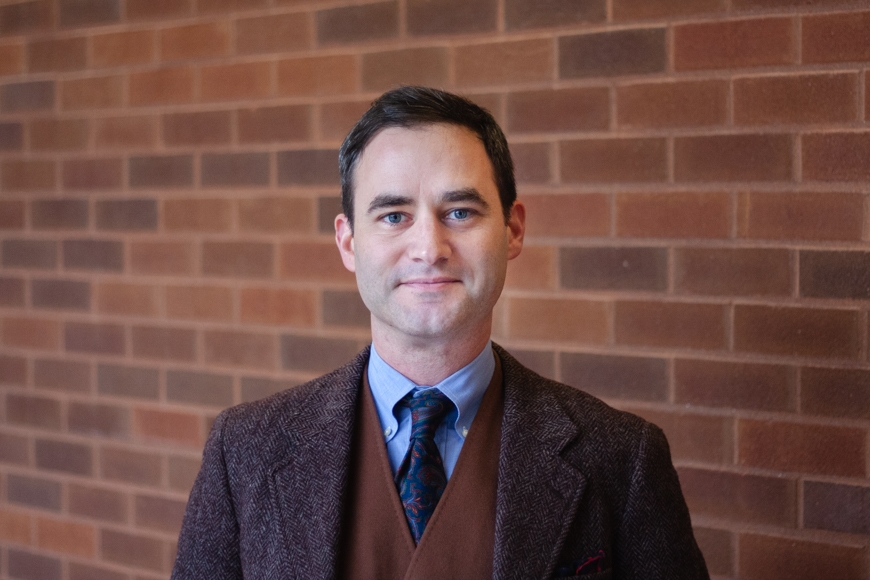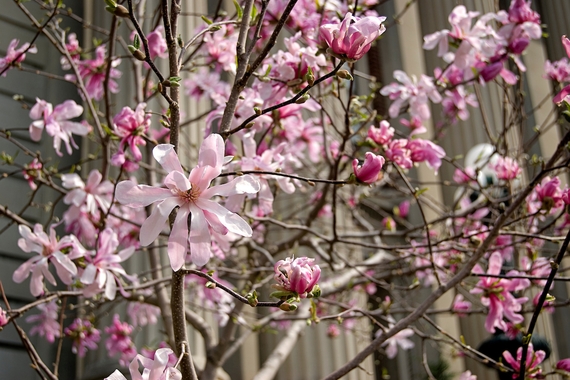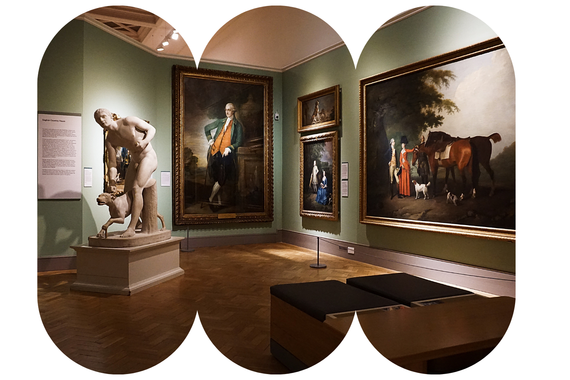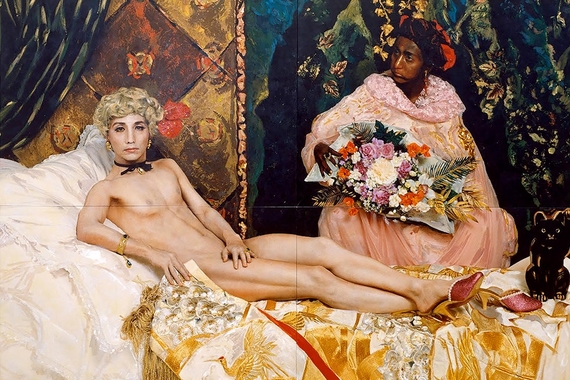The Art of Looking Deeply
Years ago while in Taiwan, one of Assistant Professor Dan Greenberg’s mentors would take him to sit and look at paintings for up to an hour. That experience changed the way that Greenberg thought about viewing art. He learned the value of slowing down and digesting a piece in detail.
Now, Greenberg incorporates that lesson in his own teaching. He encourages his students to consider the form and color of each individual brushstroke and analyze why the artist chose it, to slow down and look at things with intention.
Greenberg joined the University of Minnesota’s Department of Art History in fall 2019. After living in Brooklyn, New York, for six years, Greenberg is settling into St. Paul and enjoying the natural beauty of the Twin Cities. His first classes were an introductory class on Asian art and a course on Chinese painting, and he aims to teach students how to interact with the world around them.
From Biology to Asian Art
Greenberg earned a degree in biology and worked as an ornithologist. Following undergraduate school, he went to China with the Peace Corps as an environmental education volunteer. During that time, he became particularly interested in Chinese art and culture. From there, he received a graduate certificate in contemporary Chinese art at the Johns Hopkins Nanjing Center, a masters from the National Taiwan University, and a PhD in History of Art from Yale.
With a specialty in early modern China and its relationship to Europe and neighboring countries such as Tibet, Mongolia, and Japan, Greenberg analyzes the artistic and cultural exchange in the early modern era, a lively time in Chinese history. At the University, he will be teaching about how the exchange of ideas occurs between China and the rest of the world.
Greenberg is currently teaching a course on art, science, and the Jesuits of China. “We're looking at the way that these Jesuit missionaries working in China created art that was a mix of Chinese and European ideas about art and science,” says Greenberg.
The course is similar to one he taught at Yale, and Greenberg will continue to teach additional topics focused on how ideas are exchanged across borders. For example, next year Greenberg will teach a course on Buddhism in Asia, which stretches from India to Japan.
Teaching Engagement
Connections between religion and international relations are what make art history relevant to all areas of culture. Greenberg says the most important part of art history is the tools that it gives you to engage with the world. More than specific names, dates, and figures, the discipline is a method of inquiry.
“Whether you take my introduction to Jesuits class, or Jesuits and East Asia class, or my Introduction to Asian Art or Chinese Painting class, what I want people to come away with is this ability to interact with the world in a specific way and to use this mindset to think about the world around you,” Greenberg says.
Learning to See
Greenberg strives to teach his students to really look at things. He wants liberal arts students to have the ability to see, analyze, talk about, and write about not only art or Asian art but everything that surrounds them.
Greenberg’s background in biology and the United States Peace Corps reminds us that pathways are often nonlinear and that it is possible for individuals to turn their interests into a profession. Now, he enjoys teaching his students to look deeply into humans’ artistic endeavors with intention.
This story was written by an undergraduate student in Backpack. Meet the team.



